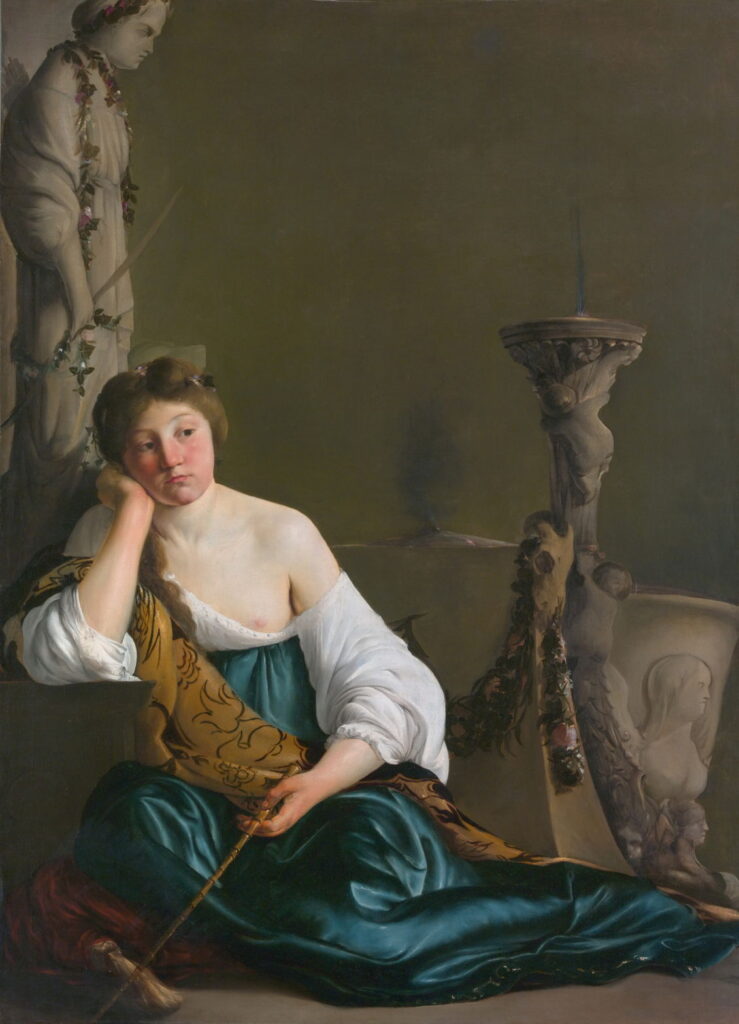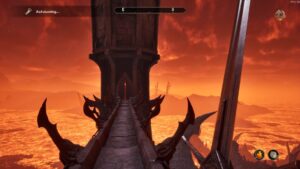Mad, bad and dangerous to know: Paintings of Medea 2

In the first of these two articles tracing the mythical life of Medea, I showed paintings of her involvement with Jason in his quest for the Golden Fleece, for which she was to be rewarded by marriage to him. She then used her skills of sorcery to rejuvenate Jason’s father Aeson.
When the couple returned to Iolcus, Pelias was still king and refused to surrender his throne to Jason. Medea then used her sorcery to persuade the king’s daughters, the Peliades, to kill their father, and boil his dismembered body with ‘magic’ herbs, in the hope that this would turn him into a young man again, just as she had with Jason’s father. To ensure their commitment, Medea first demonstrated her rejuvenation procedure on a sheep.
The Peliades were hooked, and pleaded with Medea to do the same to Pelias. She set out to gather her magic herbs and other ingredients, and to prepare her potion once more. As that was under way, Medea urged the Peliades to drain the blood from Pelias in preparation for his treatment, by cutting his throat and other sites of major blood vessels.
The daughters couldn’t bear to watch one another, but attacked their father while he was still in bed. He tried to prop himself up on his elbow and ask them what they were doing, but was cut short as Medea plunged his body into the boiling cauldron, which contained water, not the magic potion.
Georges Moreau de Tours (1848-1901), The Murder of Pelias by His Daughters (1878), oil, further details not known. Wikimedia Commons.
Georges Moreau de Tours’ The Murder of Pelias by His Daughters (1878) is one of very few paintings to show the Peliades committing this horrendous act. The old man is resting rather uncomfortably on a couch, behind which his name is inscribed in Greek. Medea shrinks into the shadows behind, her face half-covered, as the young women set about Pelias with their daggers. The daughter at the back appears to be offering Medea a knife so that she can join in, but she sits impassively in front of her boiling cauldron.
Knowing that she had deceived the Peliades in her plan to get them to murder their father, Medea fled in her chariot drawn by winged dragons. She reached Corinth, where she set up household with her husband Jason and their growing family.
Richard Dadd (1817–1886), Jason and Medea (1855), watercolour on paper, dimensions not known, The Victoria and Albert Museum, London. Image courtesy of and © Victoria and Albert Museum, London.
Richard Dadd’s watercolour of Jason and Medea, or The Flight of Medea with Jason – Chief of the Argonauts, is dated 16 October 1855. Dadd’s painting shows Iolcus in the distance, and Medea’s maid watching to see if they are being pursued. Medea’s very masculine appearance results from the artist’s inability to obtain female models while he was in Bethlem.
According to Euripides’ play Medea, she had two children by Jason, Mermeros and Pheres. Later Creon, King of Corinth, offered Jason his daughter Glauce in marriage. When Jason abandoned Medea for Glauce, Medea avenged his betrayal by killing their two children, Jason’s new wife and her father.
Anselm Feuerbach (1829–1880), Medea (1870), oil on canvas, 198 × 396 cm, Neue Pinakothek, Munich, Germany. Wikimedia Commons.
Anselm Feuerbach shows Medea with their two young children, watching as Jason and his crew push their boat back into the surf to depart. Presumably the woman in black is mother or mother-in-law. Medea appears almost an archetypal mother, a Madonna and infant plus one, not even looking at the departing boat. She is no sorceress, and the merest suggestion that she could ever kill those children in vengeance seems absurd.
Paulus Bor (c 1601–1669), The Disillusioned Medea (The Enchantress) (c 1640), oil on canvas, 155.6 x 112.4 cm, The Metropolitan Museum of Art, New York, NY. Wikimedia Commons.
Paulus Bor’s The Disillusioned Medea (The Enchantress) (c 1640) appears unique among the images of the sorceress. She sits, her face flushed, resting her head on the heel of her right hand. In her left, she holds a wand made from bamboo or rattan. The wand appears poised, ready for use as soon as she has worked out what to do next. Behind her is a small altar, and Walter Liedtke has identified the statue at the left as Diana.
Medea first sent Glauce a poisoned wedding dress that killed her and her father horribly, then took her two children away to kill them.
Eugène Delacroix (1798–1863), Medea about to Kill her Children (1838), oil on canvas, 260 × 165 cm, Palais des Beaux-Arts de Lille, Lille, France. Wikimedia Commons.
Eugène Delacroix’s first account of this infanticide, Medea about to Kill her Children from 1838, captures the scene well. The mother looks anxiously into the distance, to see if she’s being followed, or there are any witnesses about. The boys seem to know what is about to happen: one is crying as Medea’s arm is holding him by his neck, and the other is hiding under her skirts.
Eugène Delacroix (1798–1863), Medea about to Kill her Children (1862), oil on canvas, 122 x 84 cm, Musée du Louvre, Paris. Wikimedia Commons.
Delacroix made at least two later copies, including this half-size version of 1862, now in the Louvre.
Evelyn De Morgan (1855–1919), Medea (1886), oil on canvas, 148 x 88 cm, Williamson Art Gallery & Museum, Birkenhead, England. The Athenaeum.
Evelyn De Morgan’s Medea (1886) shows her abandoned, staring wistfully as she walks along the polished stone floor of her palace. She holds a vial of potion in her right hand: might this be the substance with which she impregnated the wedding dress she sent to kill Glauce, perhaps?
Joseph Mallord William Turner (1775–1851), Vision of Medea (1828), oil on canvas, 173.7 x 248.9 cm, The Tate Gallery (Accepted by the nation as part of the Turner Bequest 1856), London. Image © and courtesy of The Tate Gallery, http://www.tate.org.uk/art/artworks/turner-vision-of-medea-n00513
JMW Turner’s Vision of Medea (1828) is the first in a series of more modern attempts to tell Medea’s story, and one of Turner’s few uses (perhaps his only use) of multiplex narrative. In the middle of the canvas, Medea is stood in the midst of her incantation to force Jason’s return. In the foreground are the materials she is using to cast her spell: flowers, snakes, and other supplies of a sorceress. Seated by her are the Fates. In the upper right, Medea is shown again in a flash-forward to her fleeing Corinth in a chariot drawn by dragons, the bodies of her children thrown down after their deaths.
With her children dead, Medea fled to Athens, where she married King Aegeus and had a child by him. Aegeus had been childless until the King of Troezen got him drunk and packed him off to bed with his daughter Aethra. She was instructed in a dream to leave Aegeus asleep, and to go to a nearby island, where she was also impregnated by the god Poseidon. Theseus, who is presumed to have been conceived that night, was thus considered to have double paternity, by god and man, a common qualification for the heroes of myth.
Aegeus returned to Athens, after burying his sword and sandals under a massive rock. He told Aethra that when his son grew up, she should tell him to move the rock, as a test. If he succeeded, then he should take the sandals and sword as evidence of his paternity. When Theseus was old enough, his mother Aethra showed him the rock, and gave him Aegeus’ instructions. Theseus moved the rock, found the sandals and sword, and then undertook an epic journey overland to visit his father in Athens.
When the young Theseus arrived in the court of King Aegeus, he wasn’t recognised by his father. Medea then tried to get Aegeus to administer the poison aconite to Theseus, before he was recognised, in a bid to keep Aegeus to herself. She prepared the poison in a cup which the king then offered to the young Theseus. At the last minute, just as Theseus was about to drink the aconite, Aegeus recognised that the sword borne by Theseus was his, and knocked the cup away, saving his son’s life.
Antoine-Placide Gibert (1806-1875), Theseus Recognised by his Father (1832), oil, dimensions not known, Musée des Beaux-Arts, Bordeaux, France. Image by VladoubidoOo, via Wikimedia Commons.
In Antoine-Placide Gibert’s Theseus Recognised by his Father (1832), the three principal actors are arranged almost linearly across the canvas. Just left of centre, Theseus stands, his head in profile, the fateful cup in his left hand, and his father’s sword in his right. The king is just right of centre, looking Theseus in the eye, and appearing animated if not alarmed. At the far right is Medea, her face like thunder, sensing that her plot to kill Theseus is about to fall apart.
Hippolyte Flandrin (1809–1864), Theseus Recognized by his Father (1832), oil on canvas, 114.9 × 146.1 cm, École nationale supérieure des Beaux-Arts, Paris. Wikimedia Commons.
Hippolyte Flandrin’s Theseus Recognized by his Father that won the Prix de Rome in 1832, has a more neoclassical look which bears the influence of Jacques-Louis David.
Flandrin establishes the scene as Athens, with a view of the Acropolis in the background. His timing is different from Gibert: this painting shows the moment immediately after Aegeus has recognised his son, and the cup of aconite lies spilt on the table; it is thus post-climactic. Theseus, conspicuously naked, stands in the middle of the canvas, his father’s sword held rather limply in his right hand. Aegeus stands to the left of centre, talking to his son quite emotionally.
But of all the characters shown in this painting, it is Medea who is the most fascinating. Stood at the far left, she appears to be on her way out. She is po-faced, and looks as if she has come not from Greece, but from central Asia, perhaps. Medea fled and was never to be heard of again.


